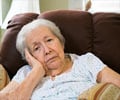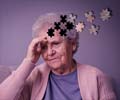Smell loss is a predictor for dementia risk among the elderly. A recent study found that the sense of smell is closely connected with brain function and health.

- Senior citizens who show diminishing sense of smell are more likely to have dementia.
- The sense of smell is closely connected with brain function and health.
- Loss of the sense of smell is often an early sign of Parkinson’s or Alzheimer’s disease.
"These results show that the sense of smell is closely connected with brain function and health," said the study’s lead author, Jayant M. Pinto, MD, a professor of surgery at the University of Chicago and ENT specialist who studies the genetics and treatment of olfactory and sinus disease. "We think smell ability specifically, but also sensory function more broadly may be an important early sign, marking people at greater risk for dementia."
Knowing is Preventing
"We need to understand the underlying mechanisms," Pinto added, "so we can understand neurodegenerative diseases and hopefully develop new treatments and preventative interventions."
"Loss of the sense of smell is a strong signal that something has gone wrong and significant damage has been done," Pinto said. "This simple smell test could provide a quick and inexpensive way to identify those who are already at high risk."
The study, "Olfactory Dysfunction Predicts Subsequent Dementia in Older US Adults," published September 2?, 2017, in the Journal of the American Geriatrics Society, follows a related 2014 paper, in which olfactory dysfunction was associated with increased risk of death within five years. In that study, loss of the sense of smell was a better predictor of death than a diagnosis of heart failure, cancer or lung disease.
Test results showed that:
- 78.1 percent of those examined had a normal sense of smell; 48.7 percent correctly identified five out of five odors, and 29.4 percent identified four out of five.
- 18.7 percent, considered "hyposmic," got two or three out of five correct.
- The remaining 3.2 percent, labeled "anosmic," could identify just one of the five scents (2.2%), or none (1%).
The olfactory nerve is the only cranial nerve directly exposed to the environment. The cells that detect smells connect directly with the olfactory bulb at the base of the brain, potentially exposing the central nervous system to environmental hazards such as pollution or pathogens. Olfactory deficits are often an early sign of Parkinson’s or Alzheimer’s disease. They get worse with disease progression.
"This evolutionarily ancient special sense may signal a key mechanism that also underlies human cognition," noted study co-author Martha K. McClintock, Ph.D., the David Lee Shillinglaw Distinguished Service Professor of Psychology at the University of Chicago, who has studied olfactory and pheromonal communication throughout her career.
McClintock noted that the olfactory system also has stem cells which self-regenerate, so "a decrease in the ability to smell may signal a decrease in the brain’s ability to rebuild key components that are declining with age, leading to the pathological changes of many different dementias."
In an accompanying editorial, Stephen Thielke, MD, a member of the Geriatric Research, Education and Clinical Center at Puget Sound Veterans Affairs Medical Center and the psychiatry and behavioral sciences faculty at the University of Washington, wrote: "Olfactory dysfunction may be easier to quantify across time than global cognition, which could allow for more-systematic or earlier assessment of neurodegenerative changes, but none of this supports that smell testing would be a useful tool for predicting the onset of dementia."
"Our test simply marks someone for closer attention," Pinto explained. "Much more work would need to be done to make it a clinical test. But it could help find people who are at risk. Then we could enroll them in early-stage prevention trials."
"Of all human senses," Pinto added, "smell is the most undervalued and underappreciated - until it’s gone."
References:
- Dara R. Adams et al, Olfactory Dysfunction Predicts Subsequent Dementia in Older U.S. Adults, Journal of the American Geriatrics Society (2017) http://dx.doi.org/10.1111/jgs.15048
Source: Medindia












